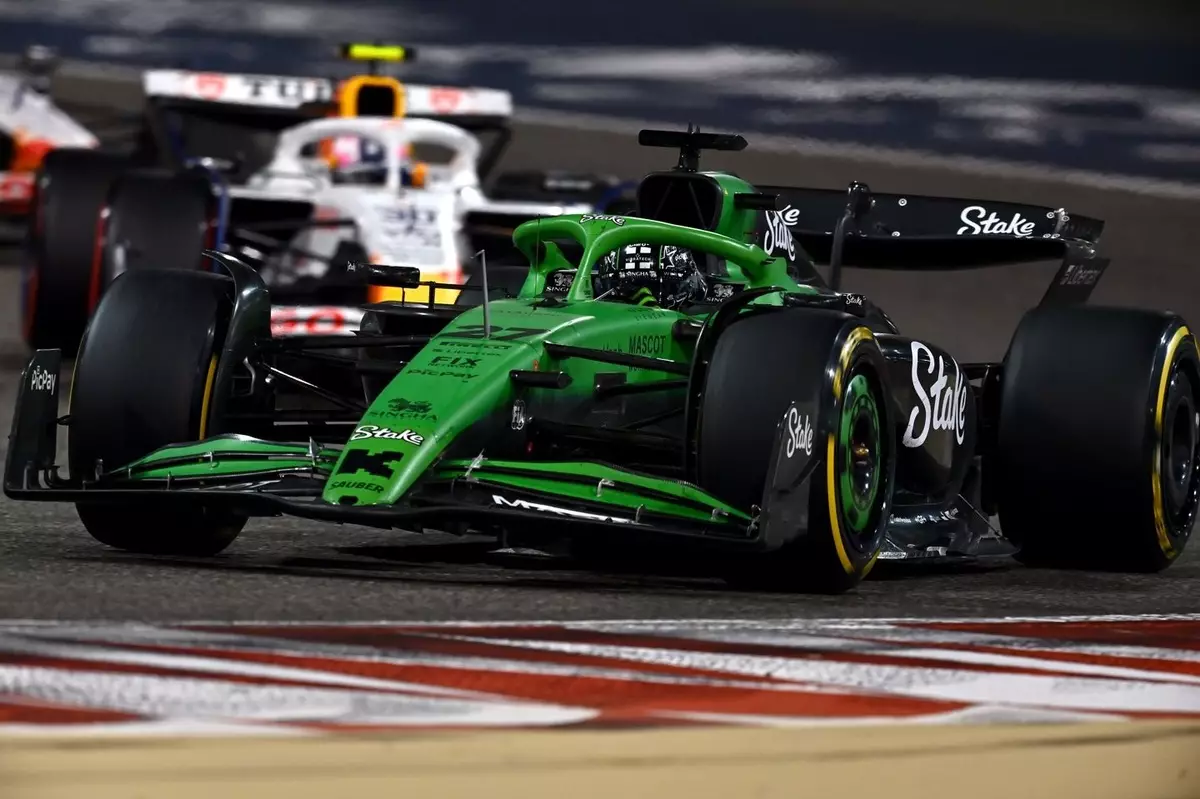The world of Formula 1 is notorious for its razor-thin margins, where fractions of a millimeter can be the difference between success and disqualification. The recent disqualification of Nico Hulkenberg’s car from the Bahrain Grand Prix has sparked concern and reflection within the Sauber Formula 1 team. Crossing the finish line in 13th place, Hulkenberg’s car was quickly relegated to the sidelines when it was discovered that his skid plank had worn down to 8.4 mm—below the mandatory minimum thickness of 9 mm. This incident marks the second instance in the same season where a car has been disqualified for similar reasons, drawing attention to a critical and often underestimated aspect of race performance.
The Bumpy Road: Analyzing the Bahrain Circuit
The Bahrain Grand Prix, while celebrated for its challenging layout and stunning night race atmosphere, is notorious for its uneven surface, which can exacerbate skid wear. Beat Zehnder, a veteran of Sauber, highlighted the difficulties posed by the bumpy circuit yet refrained from using this as a blanket excuse. It brings forth an interesting point—how much does the circuit’s condition truly impact a team’s compliance with regulations? Although bumpy tracks can indeed promote increased wear on components like skid planks, it is imperative for teams to thoroughly prepare and anticipate these challenges. Zehnder pointed out the importance of having accurate measurements during practice sessions, specifically noting that Hulkenberg’s limited laps in FP3 could have led to a crucial reference point being overlooked.
Understanding Team Performance Dynamics
One of the sources of confusion following the disqualification was why Hulkenberg’s car experienced issues when his teammate, Gabriel Bortoleto, did not. The answer appeared to lie in the differing setups of the two cars. Hulkenberg’s choice of a setup with more downforce could potentially contribute to greater wear under conditions that emphasize skid plank durability. This observation underscores the importance of car configuration in relation to track conditions—teams must not only find optimal setups for speed but also ensure that their cars are resilient enough to adhere to strict regulations.
Sauber’s challenges extend beyond this isolated incident. Throughout the season, their performance has been lackluster, with their only scoring points in the chaotic mixed-weather race in Australia. The underlying issue appears to be a narrow performance window in their 2025 car, particularly evident in the sweltering circumstances of Bahrain. Zehnder’s candid assessment suggests that without significant improvements—ideally two or three tenths of a second—qualifying positions will remain challenging, and that competitive edge in the fast-paced environment of F1 may be compromised.
The Dynamics of Dirty air versus Free Air
A significant factor in F1 strategy that has become increasingly discussed is the impact of “dirty air.” Zehnder articulated that free air is a precious commodity, indispensable for a car’s performance. When encumbered by the turbulent air of competing vehicles, the cars struggle to maintain tire health and consistent lap times. In fact, a lap time difference of around 1.2 to 1.5 seconds is often required to effectively attack and overtake. This realization emphasizes the harsh realities that Sauber faces: a substantial gap in qualifying results implies that unless they can extract more performance, they will remain mired in a challenging position, unable to capitalize on potential races.
Looking Ahead: Regaining Competitiveness
As the Sauber team seeks answers and strategically plans ahead, the disqualification of Hulkenberg serves as both a lesson and a wake-up call. With every race offering opportunities and challenges, Sauber must remain vigilant in analyzing their data, adjusting their strategies, and ensuring compliance with regulations. The convergence of technical performance and track conditions will be instrumental in their ability to reclaim a competitive edge in the F1 landscape. Balancing speed with reliability will require ingenuity and a thorough understanding of the intricate dynamics that dictate success, pushing Sauber further into the competitive fray.

